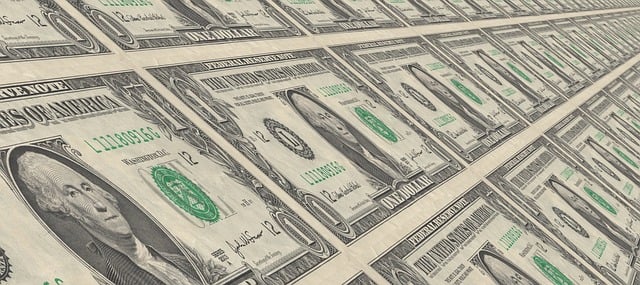
Currency exchange rates represent the value at which one form of money can be traded for another. Typically, these involve national currencies, though they can also include sub-national currencies like the Hong Kong dollar or supra-national ones such as the euro. A currency exchange rate can also be understood as the value of one nation’s currency compared to that of another. For example, if the interbank exchange rate between the Japanese yen and the U.S. dollar is 141, it means ¥141 can be exchanged for US$1, or equivalently, US$1 can be traded for ¥141. In this scenario, the price of one dollar in yen is ¥141, while the price of one yen in dollars is $1/141. Exchange rates may also be expressed as ratios — for instance, USD/EUR = 0.8625. This ratio is dimensionless, meaning 1 U.S. dollar equals 0.8625 euros, or conversely, 1 euro equals 1/0.8625 = 1.1594 U.S. dollars. Thus, EUR/USD = 1.1594.
Current currency value represents how much one nation’s currency is worth compared to another. It shows the rate used when converting money from one currency to another. Both official reference rates and market-average exchange rates follow the ISO 4217:2015 international standard, which defines a three-letter currency code and a three-digit numeric identifier for each currency. Sending money abroad can often be costly. Traditional banks may include hidden charges of up to 5% on foreign transfers, making the overall cost higher than expected. For a more affordable option, Wise (formerly TransferWise) usually offers lower fees. For instance, transferring 500 USD to EUR could be as much as 70% cheaper with Wise compared to some other providers.*
*This comparison is based on research carried out between July and August 2025 (see additional details here).
Exchange rate today for Taka in inter-bank and customer transactions is set by dealer banks, reflecting the dynamics of supply and demand. Bangladesh Bank (BB) conducts USD buying or selling operations with dealer banks at prevailing inter-bank rates whenever necessary to ensure market stability. The rates below represent those used by BB for transactions with the Government and various International Organizations. The USD/BDT buying and selling rates shown are the highest and lowest inter-bank rates in Dhaka. Cross rates of the Taka against other foreign currencies are determined based on New York and Dhaka closing rates. Exchange rate today shows the European Commission’s official monthly accounting rate for the euro, along with the corresponding conversion rates for other currencies and historical rates dating back to 1994. This static currency converter provides the official euro rate and the conversion values determined by the European Commission’s Accounting Officer in accordance with Article 19 of the Financial Regulation.
Why do exchange rates change? Exchange rates indicate how much of one currency you can obtain using another. Because of this, they are always shown as pairs of currencies. A widely referenced pair is GBP/USD, which compares the British pound to the US dollar. For instance, if the market rate for GBP/USD is 1.25, exchanging £1 would yield US$1.25 (ignoring any transaction fees). You can also look at it the other way around. At the same time, the USD/GBP rate could be 0.80, meaning each US$1 would convert to £0.80.Even small fluctuations in the rate can significantly affect how much you receive when exchanging money. Exchange rates reflect a country’s economic stability and fluctuate as the demand for its currency rises or falls. Several elements influence these fluctuations. For example, a currency’s worth can increase or decrease because of global trade activities, government policies, investor sentiment, political developments, and the overall economic performance of the country.
Currency value can be determined by looking at the rate at which one nation’s money can be exchanged for another’s. Essentially, it reflects the cost of foreign money in terms of your own currency. For instance, if the EUR/USD rate is 1.10, this indicates that 1 euro can be traded for 1.10 U.S. dollars. While this seems straightforward, the rate actually reflects a complex interplay of economic conditions, financial markets, government policies, and geopolitical events, which are discussed further below.Today, most exchange rates fluctuate continuously (or “float”) depending on supply and demand within the foreign exchange (forex) market, which operates around the clock during weekdays. The forex market is the world’s largest financial market, with daily trading volume reaching $7.5 trillion as of April 2022, according to the Bank for International Settlements.
Effect of Exchange Rate on Imports exchange rate fluctuations directly influence the cost of goods and services produced in Australia relative to those produced abroad. When the Australian dollar weakens, or loses value, it takes fewer foreign currency units to buy a set amount of Australian dollars. This makes Australian goods and services more affordable for overseas buyers compared to foreign products. For instance, if the Australian dollar depreciates, international tourists visiting Australia will need less of their own currency to cover expenses like accommodation and meals. Conversely, when the Australian dollar strengthens, Australian goods and services become more expensive for foreign consumers, and Australian travelers will need fewer Australian dollars to pay for expenses abroad. Exchange rate changes also have secondary effects because shifts in the relative prices of domestic and foreign goods influence overall economic activity and inflation in Australia. For example, a depreciation of the Australian dollar can stimulate economic activity and affect price levels within the country, while an appreciation of the dollar tends to have the reverse impact.
Effect of Currency Depreciation leads to a reduction in the value of a nation’s currency relative to other currencies, particularly under a floating exchange rate system. Market dynamics of supply and demand influence this decline and determine the rate at which the currency depreciates. A country’s trade balance, including exports and imports, significantly impacts this rate. Essentially, a currency’s value is shaped by overall economic conditions as well as international trade activities, and it can influence other financial and economic decisions. Consider two nations, one using currency A and the other using currency B. Initially, 1 unit of currency A equaled 4 units of currency B. Due to industrial challenges and political events in tcountry using currency A, the exchange rate shifted, and now 1 unit of A equals only 3.6 units of B. This change exemplifies the depreciation of currency.
How Exchange Rates Impact Inflation exchange rates play a significant role in inflation, as fluctuations in currency values can influence the cost of imported goods and services. A weaker domestic currency makes imports more expensive, which can push up overall prices and contribute to higher inflation. Conversely, a stronger currency can make imports cheaper, helping to keep inflation lower. International money markets are deeply linked, meaning economic events in one country can ripple across the world. Historical examples include the 2008 global financial crisis, which began in the United States and spread to economies worldwide, and more recently, the COVID-19 pandemic, which disrupted supply chains and economies in almost every nation. Even in stable periods, changes in the cost of goods and services can significantly affect other areas of finance, including cross-border money transfers.
Currency appreciation refers to the rise in the value of a country’s currency relative to one or more foreign reference currencies, usually within a floating exchange rate system where no fixed currency value is set. Conversely, currency depreciation is the decline in a currency’s value. Short-term fluctuations in currency value are reflected in changes in exchange rates.There is no universally ideal currency value, as both high and low valuations involve trade-offs and affect different groups in varying ways.In a floating exchange rate system, a currency appreciates or depreciates depending on whether its demand increases or decreases relative to its supply. In the short term, this can occur unpredictably due to factors such as trade balances, market speculation, or other movements in international capital markets. For instance, if residents of a country buy more foreign goods, the demand for foreign currencies rises, leading to depreciation of the home currency. Conversely, if there is an inflow of foreign currency into a country, it increases demand for the local currency, causing it to appreciate. As an example, starting in May 2022, due to the war in Russia and partial military mobilization, many Russians relocated to Armenia, resulting in increased demand for the Armenian dram and appreciation of the local currency.



